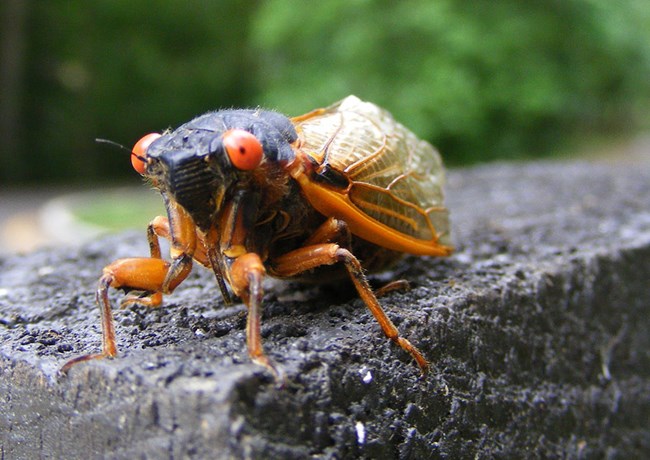
Find technical documents and information here including:
- Monitoring protocol documents
- Natural Resource Condition Assessment reports
- Monitoring objectives for each vital sign
Source: NPS DataStore Saved Search 1296. To search for additional information, visit the NPS DataStore.
Source: NPS DataStore Saved Search 1279. To search for additional information, visit the NPS DataStore.
Monitoring Objectives by Vital Sign
- Determine the distribution of amphibian species and document the proportion of area occupied by amphibian species in the parks
- Detect trends in the proportion of area occupied by amphibian species
- Provide information to aid in the generation of hypotheses for determining causes of differential abundance or long-term changes in the proportion of area occupied among species, habitats, and areas
- To identify and evaluate management actions to reverse declining trends or to increase the occupancy of potential habitats.
-
Obtain annual estimates of density and/or indices of abundance for forest-nesting bird species, including those designated as priorities for conservation efforts, across parks in the NCRN network.
-
Estimate long-term trends in density/abundance across parks in the NCRN network.
-
Tree and shrub distribution, composition and richness: Deer browse, exotic plants, and pathogens all have the potential to impact some plant species more than others. Monitoring species composition will allow the NCRN to identify individual species which have a changing geographic range throughout the region. This will be an effective means of monitoring species which tend not to be very abundant in individual plots, but are present in many plots. Locations or forest types which are particularly species rich or contain rare species can also be identified and may merit special management consideration. All tree and shrub species will be monitored.
-
Tree and shrub basal area and abundance: Basal area is a measure related to the total woody biomass of a forest stand. Large declines in basal area are indicative of a major disturbance in the forest ecosystem. If these declines were widespread and not part of natural disturbance processes they could have a significant negative impact on all other forest species. Abundance and basal area of individual tree and shrub species will allow the NCRN to determine if individual species are declining or increasing region-wide. This will be particularly useful for species which are found in many plots and tend to be abundant in those plots.
-
Amount of coarse woody debris per plot: Coarse woody debris is an important habitat for many animal and microbial species. Declines in the amount of coarse woody debris could negatively impact a wide variety of other species.
-
Distribution, abundance and basal area of exotic trees and shrubs: This will allow the NCRN to determine if exotic trees and shrubs are becoming more common and to determine what changes in forest vegetation condition are associated with these exotic species.
-
Exotic understory plant distribution and cover: Exotic plants may be able to out-compete native understory plants. By monitoring the distribution of understory plants the NCRN will be able to determine which plants are spreading throughout the region. The NCRN will monitor the cover of exotic plants to determine how large of an impact they are having in the plots where they occur. The NCRN will work with the regional Exotic Plant Management Team and the Invasive Species Coordinator to determine which plants should be monitored. The list is updated annually as new plant species invade network parks.
-
Vines on trees: The NCRN will identify all vine species growing on each tree, including exotic vines, and determine which trees have vines growing in the crown. This will allow us to determine if invasive vines are spreading and if trees that have vines have a higher mortality rate that those without vines.
-
Presence of select forest pests and diseases: The NCRN will record the presence of select forest pests and diseases on trees. The NCRN will work with the regional Integrated Pest Management Coordinator to determine which pests and diseases should be monitored. We will focus on those which are particularly destructive. By tracking the survival of infected trees, the NCRN will determine if these pests and diseases are causing significant tree mortality in network parks.
-
Determine current conditions and track long-term trends in water resource condition measured by physical habitat, fish, and benthic macroinvertebrates.
-
Determine trends in species composition and functional groups of fish and benthic macroinvertebrates.
-
Use monitoring data to detect invasions of non-native fishes.
- Assess variance in temperature, specific conductance, pH, dissolved oxygen, nutrients and acid neutralizing capacity in priority streams of the NCRN, on a diurnal and seasonal basis as well as over the long term
- Assess trends in temperature, specific conductance, pH, dissolved oxygen, nutrients and acid neutralizing capacity
-
Assess stream condition by identifying single parameters with values out of bounds:
-
Biologically (determined through literature search),
-
According to drinking water standards,
-
According to Environmental Protection Agency and state designated use standards, or
-
Of previous variability
-
- Monitor the flow volume (discharge) of surface water in major streams of the NCRN parks
- Assess the availability of sufficient water for ecological, recreational, and aesthetic purposes of the parks
- Develop rating curves for a range of environmental conditions, land use, and weather patterns, for each water body (e.g., compare a drought year vs. an El Niño year) in order to gain an overall understanding of hydrologic systems within the NCRN
Last updated: June 16, 2022
